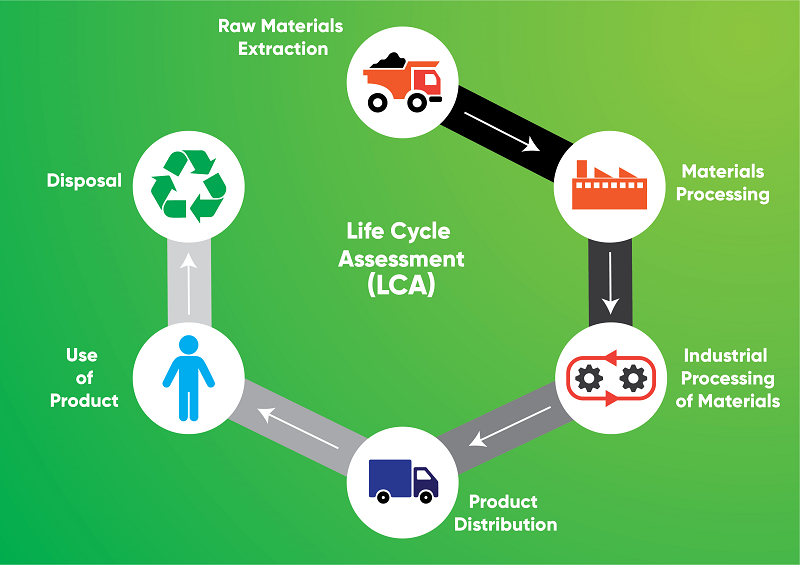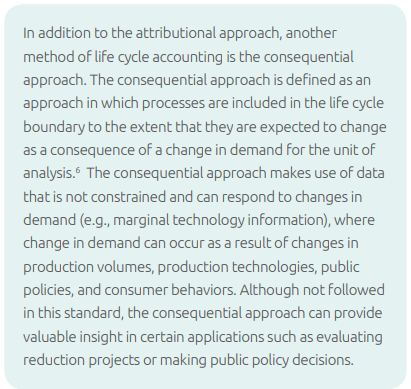
Introduction
1. Life Cycle Assessment (LCA):
- What it is: LCA is like a thorough investigation that looks at the environmental impact of a product from the very beginning to the very end of its life.
- What it covers: This investigation includes everything from where the materials come from (like extracting raw materials), how the product is made, how it’s used, and what happens to it when it’s thrown away.
2. Product Life Cycle GHG Accounting:
- What it is: This is a specific part of LCA that focuses on measuring and dealing with the greenhouse gas (GHG) emissions of a product throughout its life.
- GHG Emissions: Greenhouse gases are the gases that trap heat in the Earth’s atmosphere and contribute to climate change. So, this is about figuring out how much of these gases a product is responsible for during its entire existence.
3. Standards and Regulations:
- ISO Standards: These are international rules that tell us how to do LCA properly. They give guidelines on how to measure and report the environmental impact of products.
- PAS 2050: This is a set of rules specifically for measuring the greenhouse gas emissions of goods and services throughout their life. It was created in the UK.
4. Product Standard and ISO LCA Framework:
- Building on ISO Standards: The Product Standard uses the ISO LCA standards as a starting point. It adds more details and rules to help people consistently measure and report the greenhouse gas emissions of products.
- PAS 2050 Influence: PAS 2050 was a guide created earlier, and the Product Standard takes ideas and rules from it too.
5. Two Approaches:
- Life Cycle Approach: This means looking at the whole life of the product, from raw materials to disposal. It helps to see the big picture.
- Attributional Approach: This is about figuring out who is responsible for the greenhouse gases at each step of the product’s life. It’s like assigning “blame” for the emissions.
Example:
Imagine you’re baking a cake: LCA is like looking at every step, from buying ingredients to eating the last piece. Product Life Cycle GHG Accounting is specifically checking how much the ingredients, the baking process, and even throwing away leftovers contribute to climate change. ISO standards are like the recipe book, and the Product Standard is your own notes to make sure you’re measuring everything right. It’s a way to make sure everyone is using the same rules when talking about how environmentally friendly a product is.
Requirements
A GHG product inventory shall follow the life cycle and attributional approaches.
1. Product GHG Inventories (or Product Carbon Footprints):
- What it is: This is like figuring out how much a product contributes to climate change. It’s a way of measuring the “carbon footprint” of a product.
- Subset of LCA: It’s a part of a bigger process called Life Cycle Assessment (LCA), but it specifically looks at the impact on climate change.
2. Life Cycle Approach:
- What it means: Imagine the entire life of a product, from making it to using it and finally throwing it away. The life cycle approach looks at the environmental impact at every stage of this journey.
- ISO LCA Standards: There are international standards (ISO 14040 and 14044) that tell us how to do this properly. These standards guide us on measuring and reporting the impact on the environment throughout a product’s life.
3. Attributional Approach:
- What it means: This is a specific way of doing the accounting in the life cycle approach. It’s like figuring out who is “responsible” for the greenhouse gas emissions at each step of a product’s life.
- Linking Processes: It involves connecting the emissions and removals of greenhouse gases to the specific part of the product’s life cycle being studied.
- Data Sources: This approach uses primary data (directly from the supplier or customer) or average (secondary) data for a particular process in the product’s life.
In Simple Terms:
Imagine you’re baking cookies:
Whole Process (Life Cycle): Think about everything from buying the ingredients, baking the cookies, to eating them, and even throwing away the crumbs.
Carbon Footprint (Product GHG Inventory): Now, focus on how much all of this contributes to climate change.
Attributional Approach: Break down each step and figure out how much greenhouse gas is released or removed at each point, and who’s responsible for it.
Example:
Buying Ingredients: You find out how much greenhouse gas is produced when growing wheat for flour or manufacturing chocolate chips.
Baking: Measure the emissions during the baking process.
Eating: Consider the emissions associated with transportation to the store to buy ingredients.
Throwing Away: Figure out the impact of disposing of the packaging.
Guidance
1. Phases and Steps of a GHG Inventory:
- ISO LCA Standards: There are four main steps in studying the environmental impact of a product, called Life Cycle Assessment (LCA). These steps are setting the goal and scope, analyzing the inventory, assessing the impact, and interpreting the results.
- Additional Steps: After completing the main steps, there are additional steps like critical review and reporting.
- Dependency: Each step in this process depends on the results or methods used in other steps. For example, defining what you’re studying (unit of analysis) affects later steps like setting boundaries, collecting data, and allocation.
2. Use of Product Rules and Sector Guidance:
- Product Comparisons: If you want to compare the environmental impact of different products, you need specific rules. These rules are documented in something called a “product rule.”
- Product Rule Definition: A product rule is a document created by a group of people interested in a specific product or product category. It helps set standards for comparing or declaring the environmental impact of that product.
- Example: ISO 14025:2006 defines a type of product rule called a Product Category Rule (PCR).
- Sector Guidance: Similar to product rules, but not for comparisons. It’s guidance for companies within a specific sector to measure the environmental impact of their products. It’s not aimed at comparing products but ensuring consistency within a sector.
- Not Mandatory: While not required, using these rules and guidance can add more specific details for companies as they measure their environmental impact.
3. Requirements for Using Product Rules and Sector Guidance:
- Conformance with the Product Standard: Even if a company uses product rules or sector guidance, they still have to follow the main requirements of the Product Standard.
- Allocation Method Example: Companies can use a product rule to help them choose how to divide environmental impacts among different parts of their product, as long as it follows the standards defined in Product Life Cycle Accounting and Reporting Standard chapter 9 and is done using the attributional approach (using primary supplier or average data).
- No Exclusion Without Justification: Companies can’t use these rules to exclude certain parts of their product’s environmental impact without a good reason. If they do use these rules, they need to explain it in their inventory report.
- Transparency: Any product rules or sector guidance used must be disclosed in the report, following reporting requirements.
4. Development of Product Rules and Sector Guidance:
- Inclusive Process: These rules and guidance should be created with the input of many different stakeholders. This makes sure that a broad group of people agrees on the rules, making them more credible and consistent.
- Credibility and Consistency: Following these rules and guidance helps ensure that measurements of environmental impact are reliable and comparable across different companies.
Example:
Imagine you’re building something:
Main Steps (LCA): Decide what you want to build, gather materials, put it together, and see how it affects the environment.
Additional Steps: After you’re done, get someone to check your work (critical review) and tell others about what you found (reporting).
Dependencies: If you change your mind about what you’re building, it affects everything else.




What’s Happenin i’m new to this, I stumbled upon this I’ve discovered It positively helpful and it has helped
me out loads. I hope to contribute & assist other customers like itss helped me.
Great job. http://Boyarka-Inform.com/